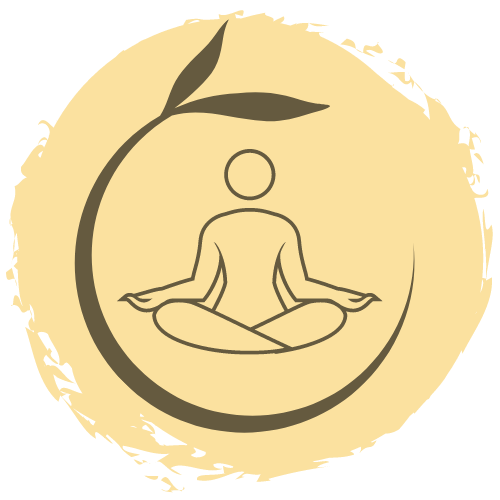The Vagus Nerve (simply explained)!
You may have heard me talking in class about the vagus nerve and some people have asked me to explain more about it. So here goes, as its rather complex, so will take a step back to first talk about the Autonomic Nervous System, which I also often mention in class, so you are really familiar with that now.
The body has automatic functions like our circulation, digestion, metabolism and even our breathing. All these automatic functions (i.e. we don’t have to think about them to do them, the body naturally does its job of keeping us breathing, metabolising our foods & nutrients and pumping the blood and other bodily fluids around the body). All of these are controlled by the autonomic nervous system (ANS), which alters its activity depending on the needs of the body in the moment.
The autonomic nervous system is divided into two branches:
1. The Sympathetic “fight or flight” system (think of ’S’ for stress)
2. The Parasympathetic “rest and repair” system (think of ‘P’ for peace’
The parasympathetic system is controlled by the vagus nerve.
Over 80% of the flow of information through the vagus nerve is afferent, meaning it is sending information from the body up to the brain (so the brain is not the ‘main’ control centre that we used to think it was. It is through this afferent feedback loop that the vagus nerve helps to regulate all the autonomic functions in the body that keep us healthy:
Heart rate Blood pressure
Breathing Digestion Immunity Repair Sleep
The vagus nerve also carries interoceptive information about the internal state of the body, especially the heart, to key centers in the brain. This is why we frequently include interoceptive practices in our yoga class.
Neuroception is a concept coined by Dr. Porges (see more below), and describes how our autonomic nervous system subconsciously evaluates and responds to cues of safety or danger in our environment:
“Detection without awareness,” Dr. Porges says.
The vagus has more than 100,000 nerve fibers, and communicates bidirectionally between the brain and the body, with 80% of the fibers communicating from the body to the brain, and the other 20% communicating from the brain to the body.
So, that “gut feeling” you’ve felt before— that’s neuroception.
It’s your body having what amounts to a sixth sense and communicating that information to your brain.
The amygdala, one of these key centers, evaluates for safety and processes emotions. The amygdala sends extensive projections to the brainstem to trigger autonomic responses, and to the higher, cognitive centers to coordinate emotional and behavioral responses.
When the amygdala perceives threat, it immediately triggers the brainstem to reduce vagal activity which serves to increase the heart rate within milliseconds of threat detection. Following vagal withdrawal, the sympathetic, fight or flight system becomes activated to sustain and further increase the heart rate, followed by the hormonal system which shifts the metabolic functions of the body through hormones such as cortisol.
““When you have a system that is chronically activated in a stress response, the vagus nerve keeps dropping out. Eventually, you end up with a reduced overall level of activity of the vagus nerve. As a result, it is not available to do its job to keep us healthy.” ”
The sympathetic nervous system is necessary to carry out our day-to-day functions and interactions. What is important is the capacity to have a wide-ranging system, with flexibility and versatility, so that we are not in a chronic state of hyper- or hypo-arousal.
We could say that our VN is a ‘superhighway to physical, mental & emotional health, transporting vital information between your brain and the rest of your internal organs. It is involved in nearly every physiological action in the human body - harnessing its power can have an immediate and dramatic impact of your well-being.
So what/where is the Vagus Nerve?
The vagus nerve is the 10th cranial nerve originating in the brain stem and travelling through the face, neck, lungs, heart, diaphragm and abdomen, including stomach & spleen, intestines, colon, liver & kidneys. The name ‘vagus’ is from the Latin for ‘wanderer’ - an appropriate name for the longest cranial nerve in the body, that wanders through all those major internal organs.
Your vagal tone can be scientifically measured and it is an indicator of how stressed you are. People with a high vagal tone has better control of their body's stress response compared to someone with a low vagal tone. It has even been said that the vagal tone is passed from mother to child.
The vagus plays an important part in slowing down the heat rate (when you breathe out). Your organs also send a message to the brain via the vagus nerve. So when our subconscious mind triggers a stress response, you will feel your heart rate increase and your breathing speeds up. So this is where we have an opportunity to affect the outcome - with our breathing!
Breathing Practices to try out for yourself to Induce the Relaxation Response:
If in Doubt, Breathe Out
Good to use when you feel in an anxious or stressed state.
Sitting with upright spine with face, shoulders, pelvis relaxed
Breathe diaphragmatically in and out through nose
Regulate your breathing to a count of 4 seconds inhalation + 4 seconds exhalation
Practice until this feels natural and well established and use it for as long as you like until you feel relaxed.
Breathing is the Secret off switch - Charge up your relaxation response by activating extended exhalation strategy by:
INTEROCEPTION Experience - feeling - sensations inside the body
Sitting = Wrap one arm around chest - 1 arm around abdomen to get a sense of the zones of respiration: ribcage & neck
To induce relaxation response, we want to stay primarily in the belly/gut & ribcage area
Breath In till you feel full, feel body pressing into hands
Once full, hold for 4; exhale longer than inhale; hold 4
Pressure of the hug also stimulates the relaxation response & the vagus nerve
Lying = boosts more possibility for sympathetic features that stimulate vagus nerve + with breath makes it more potent - muscles don’t have to keep you upright, induces another level of relaxation response
Lying On Back = Hand on chest/abd,
or
Prone with folded blanket under abd
1. Inh 6; hold 4 ; exh 8; hold 4
Continue this circuit - focus on extending EXH & pause after EXH
Constructive Rest with support under sacrum (a block or bolster)
Pelvis higher than Head & Heart = stimulates the baroreceptors (part of the carotid sinus - which stretch receptors that sense pressure changes in the arterial blood pressure - affected by vagus nerve - basically a feedback loop when body senses too much blood flowing to brain - sends a message to slow down heart rate - slow down breathing - constricting your arteries = induces the relaxation response
1. Inh till full (or sip in 4 - pause - sip in another 4 - pause)
2. SWALLOW (stimulates vagus - inducing a swallow action)
3. Exh longer than INH - like exhaling out thru a straw
4. Pause - Rest & Wait - its like a breath vacation = you are waiting till you need to breathe in again
Other practices to try out with Jill Miller of Tune Up Fitness include which has a strong emphasis on Vagus Nerve.
A vagus nerve myofascial self-massage for downregulation
Breathing for relaxation
Humming to activate the Vagus nerve
https://www.youtube.com/channel/UCVMjCuAAxTeNuvFHuvr1RwQ
Hope you are a bit wiser - how to harness your nervous system / vagus nerve for your health & wellbeing!
If you haven't yet - TRY YOGA - It ticks all the boxes!
Happy Yoga!
NOTE: for those who want to dive deeper:
Even though physicians as far back as the Roman Empire have been grappling with how the vagus nerve impacts bodily function, in recent times, Dr S Porges has been the physician who has brought this subject to life and introduced
The Polyvagal Theory into mainstream.
There are three organizing principles of the polyvagal theory, to find out more:

